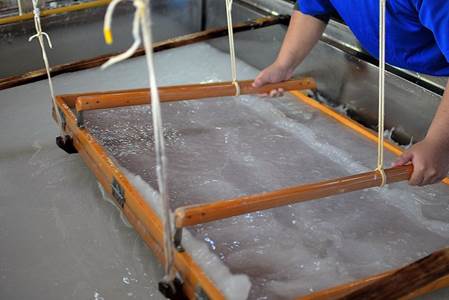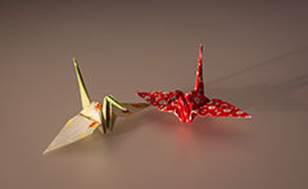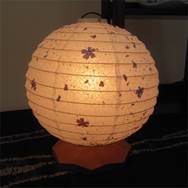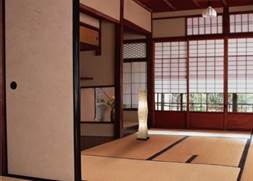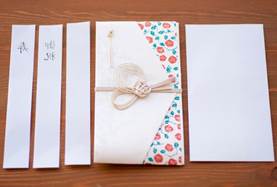|
27.4.15 NEEC 赤字はFredによる修正 和 紙(コメント) 今回のテーマは、平成26年12月6日付ジャパン・タイムズ紙の社説で、「和紙」がUNESCO無形文化遺産に登録されたことについてです。デジタル化に伴いペーパーレスや文字離れが進む時代、もう一度、和紙にしたためられた源氏物語などの美しい日本文学や、時季折々の手書きの手紙や書など我が国伝統の紙の文化を見直すきっかけになれば良いがという内容でした。私は、和紙と洋紙の違いを調べ、和紙の素晴らしさについてコメントしました。
|
|
|
1.先月、このトピックを貰った数日後に、和紙の里として知られる埼玉県小川町の近くでゴルフをした。小川町・東秩父村周辺で漉かれる和紙は「小川和紙」と総称されている。その一つである細川紙が、記事にあるように、昨年、石州半紙(島根県)、本美濃紙(岐阜県)と共に、ユネスコ無形文化遺産の保護に関する条約に基づき、「人類の無形文化遺産の代表的な一覧表」に「和紙:日本の手漉和紙技術」として記載された。 私はこの和紙づくりを是非見たいと思い、ゴルフの帰路この村に立ち寄ったところ、幸いにも細川紙が漉かれている現場を見ることが出来た。手漉き和紙作りのプロセスは、細川紙だけでなく他の和紙でもほぼ同じなのでこのパンフレットは和紙づくりを理解する手助けになると思う。回覧するのでご覧頂きたい。
|
Last
month, several days after receiving this text, I played golf near Ogawa town
in Saitama prefecture I dropped in at this village on the way back home from the golf course to see the washi-making process. I could fortunately take a look at the scene where a craftsman was hand-making the paper. Since almost all the handmade Japanese-style papers are produced by the same process as Hosokawa-shi, this pamphlet might be helpful to understand washi-making. Please read this pamphlet and pass it on. |
|
2.本日私は、和紙と洋紙の違いについてコメントしたい。 (1)まず、和紙とは何か?洋紙とは何か?これは正式に定義されていない。 一般的に古来より我が国に伝わる手漉きの紙が「和紙」、木材パルプを原料として大量生産される機械漉きの紙が「洋紙」と呼ばれているようだ。洋紙は欧米だけでなく今では我が国でも大量に生産され、使用されている紙の99%が洋紙である。 厳密に言えば、両紙ともに手漉きと機械漉きがある。機械漉き和紙は、手漉き和紙の原料を用いた機械漉きによる紙で、手漉きの風合いに似せた紙のことを言うが、本物の和紙とは思われていない。一方、欧米にも量は少ないが手漉き洋紙がある。手漉きと機械漉きの決定的な違いは紙の連続性にある。手漉きの紙は幅と長さが限られた一枚のシートであるが、機械漉きの紙は、長さが無限で連続して漉くことができる。トイレットペーパーはその典型的な例である。
|
Today, I would like to comment on the difference between washi and western paper. Firstly, what is washi? What is western paper? Each paper is not officially defined. Generally, it seems that handcrafted paper by traditional methods peculiar to Japan since ancient times is called "washi”, and machine-made paper by modern mass-production methods using wood pulp is called "western paper." Western paper is now mass-produced even in Japan not only in the West, and 99% of paper currently used in our country is western paper. Strictly
speaking, each paper |
|
(2)原料とつくり方の違い まず、原料については、コウゾ・ミツマタ・ガンピが和紙製造に使用される3大繊維である。中でもコウゾが最も一般的である。一方、洋紙製造には針葉樹・広葉樹から作られる木材パルプが使われる。低コストで大量生産するために、パルプの繊維をすり潰して粉末のようにして使う。また、手漉き洋紙の原料は、着古した白ティシャツやジーンズのようなコットンの古着やボロ布をリサイクルしたものである。和紙原料と洋紙原料の決定的な違いはその繊維の長短にある。コウゾの繊維が12mmであるのに対しボロ布の繊維は4mmである。この繊維長が紙づくりに大きく影響する。更に、洋紙の場合、木材を原料にしているものの、にじみ止めやつなぎなどのために添加物が加えられる。また、漂白するために化学的手法が用いられる。これらが紙質を弱め寿命を短くする。和紙の場合、添加物は一切使用されない。漂白についても、漂白しないか、するとしても自然漂白法で行われる。 製造法についても大きな違いがある。手漉き洋紙の製造法は、我が国では「溜漉き」と呼ばれ、「充たして保持する」あるいは「一掬いアクション」によってパルプを一度だけ漉き桁(鋳型)へ漉くって水分がしたたり落ちるのを待ちフェルト状になったパルプを紙にする方法である。 この方法では繊維の絡みはバラバラである。反対に和紙のつくり方は「流し漉き」と呼ばれ、(漉き舟と呼ばれる)水槽に紙の原料となる漉き水(水、コウゾ、ねり)を入れ、均等に分散させる。漉き桁に漉き水をすくいあげ、何度か流し込み、漉き桁の上に均等に繊維が行き渡るように繰り返し揺らす。これにより繊維がゆする方向に秩序だって絡み合う。和紙製造に欠かせないのが「ねり」である。トロロアオイと言う植物の根を叩いて抽出する粘り気のある液体で、コウゾの繊維を水の中で程よく分散させ、浮遊させる働きをする。紙漉きの過程では、繊維をお互いにつなぎとめる作用がある。粘着力がないので、乾燥の時には紙を一枚一枚はがすことが出来る。漉き水をすくいあげる回数が紙の厚さを決定する。 |
Secondly, I would like to explain the main differences between handmade washi and western paper, particularly in its materials and production method. As for the materials, “kozo”, “mitsumata”, and “gampi” are the three most common fibers used for washi production, with kozo--a type of mulberry--by far the most popular. Meanwhile, wood pulp made from conifer tree or broadleaf tree is used for western paper production. In order to mass-produce at low cost, the fiber of wood pulp is mashed into powder form. In case of handmade western paper, cotton rag pulp, which is made from discarded clothes and textiles such as old white t-shirts and jeans, is used. Compared with Western pulp, Japanese kozo differs most importantly in the length of the individual fibers--up to 12mm compared to less than 4mm for cotton rag pulp. This length contributes greatly the sheet formation. Moreover, even if plant materials are
principal ingredients for western paper, As for the production method, Japanese
and Western style methods of sheet formation differ greatly. The Japanese
call the Western method “tame-zuki” which might be roughly translated as “the
fill-and-hold way or one dip action to make paper” since pulp is held in the
mould until it drains and the remaining felted pulp forms the sheet. This
method |
|
(3)それぞれの特徴 原料の繊維の長短、製法の相違、薬品使用の有無がそれぞれの紙を特徴づける。 「洋紙は100年、和紙は1000年」という言葉がある。文字通り、和紙と洋紙では紙の耐久性に大きな違いがある。木材パルプを使用した洋紙は、原料の繊維が短く、また、多くの薬品を使うのでほとんどが酸性であるため、100年も経つと黄ばんでボロボロになってしまう。しかし、和紙は、長い繊維を流し漉きによって絡ませることができ、また化学薬品も使っていないため、強靭で加工性、保存性に富んでいる。日本で漉かれた紙で最も古いものは、西暦702年の日付のある奈良の正倉院に保管されている戸籍に使われた紙である。 逆に、洋紙は、19世紀中ごろに作られた本の3分の1が、今では補修もできないほど劣化してしまっていると言う。 見た目にも大きな違いがある。洋紙は重く、厚く、くすみがあり、用途や特性も限定的であるのに対し、和紙は軽く、薄く、半透明である。そしてその応用能力の幅広さが、いろんな分野の専門家に愛されている。
|
Thirdly,
as for the characteristic, the length of material’s fiber, the production
method, and whether to use The oldest washi handcrafted in Japan is the paper used for the family register dated the year of 702, 1300 years ago, kept in “Shosoin” (a part of a complex of repositories for treasures that consist of the Emperor Shomu's property) in Nara prefecture. Meanwhile,
in case of western paper, it is said that 1/3 of books made in the middle of
the 19th century There are also differences visually. While western paper tends to be heavy, thick and opaque, and variety and characteristics are limited, washi is lighter, thinner and translucent, and its flexibility allows favorite choices for printers, printmakers, bookbinders, fine artists and craftspeople. |
|
(4)用途 洋紙は主に、新聞紙・書籍・雑誌・カタログ・チラシなどに使用される印刷用紙、各種OA機器からのアウトプットに使用されるコピー用紙などの情報用紙 包装用紙、ティッシュやトイレットペーパーなど衛生用途などに使用される。一方、和紙は、この記事でも一部紹介されているが、書道用紙、水墨画・日本画用紙、版画用紙、掛軸・襖の裏打ち・文化財修復などの表装、障子紙・襖紙などの建築用インテリア、照明器具、雨傘、奉書紙などの包装、信仰・儀礼用のお札、のし袋・懐紙、ちぎり絵・造花などの趣味用に使われる。また、一般にはあまり知られていないが、国内だけでなく世界中の美術館や博物館で、美術品や文化遺産の維持・補修に和紙が使われている。 |
Lastly, as for the purpose of use, western paper is mainly used for printing newspaper, book, magazine, catalog, recording information data such as copy paper, packaging and sanitizing such as tissue, toilet paper. Meanwhile, washi is traditionally used for writing or drawing surface of calligraphy, ink painting, Japanese-style painting, woodblock printing, etc. More than writing surface, its superior strength makes washi suitable for umbrellas, lanterns, kites, clothing, string, packaging, even building materials as shown in the article. Though it is not generally well-known, making the most of its features, washi is used to preserve and restore paintings and ancient documents in art galleries and museums around the world.
|
|
|
|
|
3.結論 この度のトピックのお蔭で、和紙が如何に日本人の生活に実用的、文化的な潤いを与えているか、また、和紙が国内だけではなく今や世界の文化遺産の維持・補修に和紙がなくてはならない存在となっていることを知り、改めて和紙の魅力を再認識すると共に、和紙づくり職人の技に感銘を受けた。我が国の和紙作りは洋紙の普及や文字のデジタル化、更には職人の高齢化などにより激減している。無形文化遺産に登録されたことを機にこの素晴らしい和紙づくりの伝統を維持する若者が増えることを期待する。
|
Thanks
to this topic, I could learn how washi has I sincerely wish that young people who maintain this wonderful tradition of washi-making increase in number with the UNESCO’s designation as a trigger.
|
|
|
|

